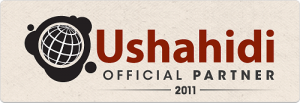

From the Ushahidi blog:
The Ushahidi community consists of a diverse group of people who have helped extend, translate and deploy the platform around the world. The Beta version in 2009 was translated into Spanish, even before Swahili. That early adoption and use lay the groundwork for even more adoption in Latin America, and with other deployment partners, we saw uses from India, Kenya, Afghanistan and many others. It is with gratitude that we recognize the organizations that help Ushahidi deploy projects by awarding the�Deployment Partner 2011�designation. What this means is that these organizations have shown that they are well versed in customizing the platform, engaging the community and deploying with a strategy that shows potential and informs others. We will be awarding these designations periodically as organizations continue to work with us.
We appreciate being named as one of their official partners, especially alongside some of the most impactful – and frankly coolest – crowdmapping projects out there (Citivox, Emoksha, Digital Democracy, just to name a few).
The impact of mapping reports is easy to recognize, and Ushahidi was one of those innovations in new media technology that really made us sit up and take notice. Our first exposure to it was Sharek961, in Lebanon, and we knew immediately that this was a powerful tool with the potential for huge impact.
For one deployment, we partnered with the Free and Fair Election Foundation of Afghanistan (FEFA) to map their observation reports for the 2010 Wolesi Jurga elections. Observers around the country sent in their reports via SMS, which were then matched with the gps coordinates of their specific polling station. This alone gave us a startling new look at the same data they’ve been gathering in previous elections, but the real eye-opening moment came when they presented their findings at a press conference the day after the election.
For this press conference, FEFA displayed its Ushahidi map on a projector screen behind them as they announced their preliminary findings. Rather than enduring an all-too-familiar press event filled with statistics and obtuse data, the entire press contingent was transfixed with the maps. As the representatives spoke, the map onscreen changed to correspond with their reports – violence, tampering, intimidation. The journalists were constantly swiveling their heads to snap pictures and follow along with the map.
We appreciate all the support we’ve received along the way from the Ushahidi developers and their amazing community, and we’re glad to see such a great group of people continuing to succeed. We think their work is an important and indispensable tool to help journalists, as well as citizens themselves, to document and report news.